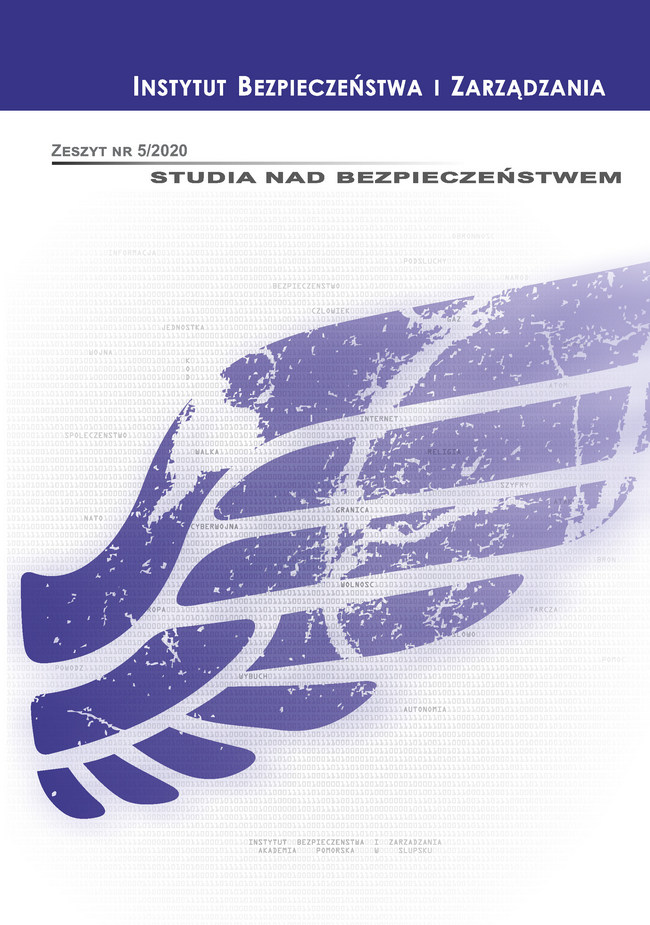Abstract
Freedom seems to be not only an immanent, but even a constitutive feature of the virtual space in which the Internet functions. Based on current observations and current events, threats resulting from the general ability to publish opinions on the Internet have been indicated. This article does not aspire to be a comprehensive explication of the impact of new technologies on the functioning of societies in a holistic dimension, it is rather an attempt at exegesis of one of its areas - concerning the evolution of human interactions under the influence of new technologies. The author addresses various aspects of threats to freedom on the Internet so that the obtained understanding is comprehensive and objective, far from being a one-sided and schematic simplification. The Internet is by definition an egalitarian communication tool, a space for free creation and flow of content, limited only by technology and human imagination, the boundaries of which cannot be defined. The article indicates the need to consolidate the efforts of experts from many areas: security; psychology; law, as it appertains to freedom of society in the security space.
References
Benkler Y., Bogactwo sieci, Jak produkcja społeczna zmienia rynki i wolność, Warszawa 2008.
Grubicka J., Motyka R., Człowiek jako ważne ogniwo zapewnienia bezpieczeństwa informatycznego jednostce administracyjnej. Bezpieczeństwo w administracji i biznesie we współczesnym świecie, cz. II, Gdynia 2011.
Grubicka J., Konwergencja technologiczna a system bezpieczeństwa informacji, [w:] Nowoczesne technologie na rzecz bezpieczeństwa. Zagadnienia dual-use, W. Filipkowski (red.), Gdynia 2015.
Grubicka J., Social are of the internet in the context of values and personal sofety threats in cyberspace, International Journal of Pedagogy Innovation and New Technologies 2020, nr 7(1), Warszawa.
Grubicka J., Restricting freedom on the internet in a public security space, East Journal of security studies No 2, Słupsk–Harkov 2017.
Grubicka J., Zbroszczyk D., Cyberaptologie jako zagrożenie dla bezpieczeństwa publicznego, [w:] „Doctrina” Studia społeczno-polityczne 2019, nr 16, Siedlce 2019.
Burszta W.J., Internetowa Polis w trzech krótkich odsłonach, [w:] Ekran, Mit, Rzeczywistość, W.J. Burszta, Warszawa 2003.
Kirwil L., Polskie dzieci w Internecie. Zagrożenia i bezpieczeństwo – część 2. Częściowy raport z badań EU Kids online przeprowadzonych wśród dzieci 9–16 i ich rodziców, Warszawa 2011.
Kulesza J., Ius internet. Między prawem a etyką, Warszawa 2012.
Makaruk K., Wójcik S., EU NET ADB, Badanie nadużywania internetu przez młodzież w Polsce, Warszawa 2012.
Mead M., Kultura i tożsamość. Studium dystansu międzypokoleniowego, Warszawa 2000.
Pyżalski J., Agresja elektroniczna i cyberbullying jako nowe ryzykowne zachowania młodzieży, Impuls, Kraków 2012.
Podgórski M., Wirtualne społeczności i ich mieszkańcy. Próba etnografii, [w:] Wielka sieć. E-seje z socjologii Internetu, J. Kurczewski (red.), Warszawa 2006.
Szpunar M., Internet a wolność (od) wypowiedzi, [w:] Media – między władzą a społeczeństwem, Rzeszów 2007.
Szpunar M., Granice wolności słowa w Internecie, [w:] Nowe media komunikacja wizualna, P. Francuz, S. Jędrzejewski (red.), Lublin 2010.
Szpunar M., Przestrzeń Internetu – nowy wymiar przestrzeni społecznej, [w:] Od robotnika do internauty. W kierunku społeczeństwa informacyjnego, A. Siwik, L. Haber (red.), Kraków 2008.

This work is licensed under a Creative Commons Attribution 4.0 International License.
Copyright (c) 2021 Array

